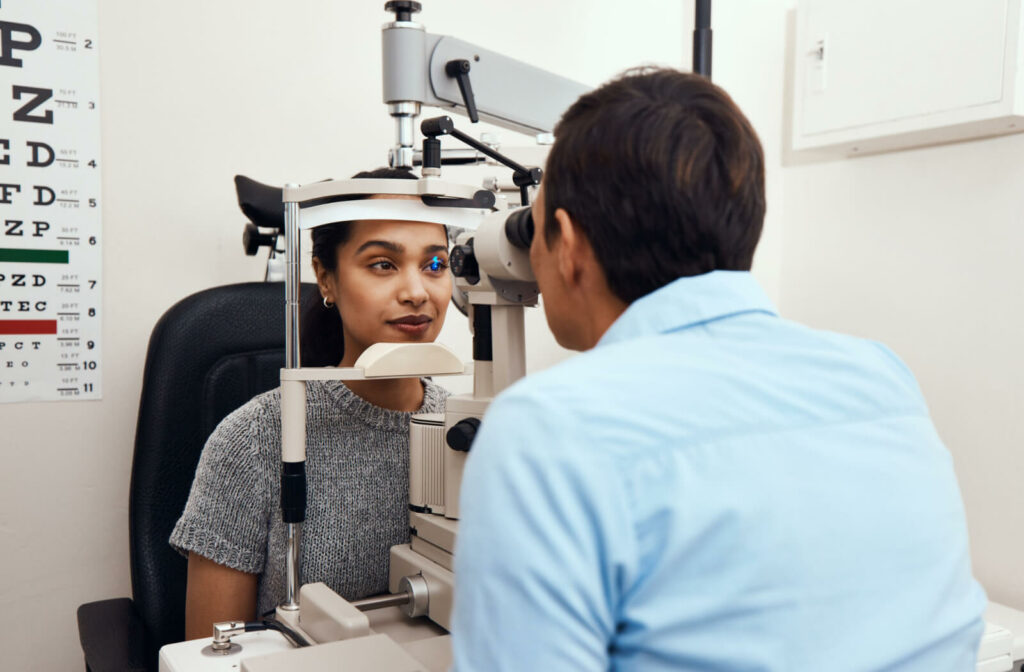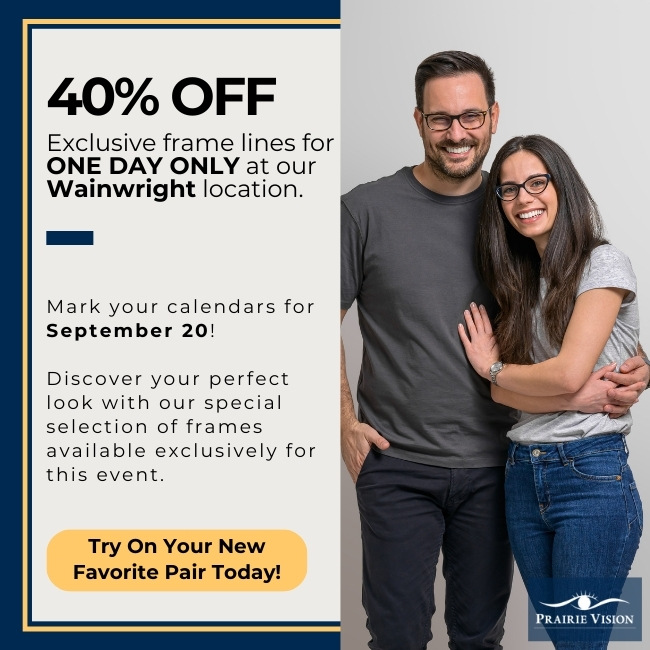Planning for Your Eye Exam
When it’s time for your routine eye appointment, or you’re ready to update your frames or lenses, how much time should you set aside?
A complete eye exam usually takes less than an hour. However, the length of your exam depends on the tests performed and your individual eye care needs.
What to Expect: Comprehensive Eye Exams
A thorough eye exam involves a few different steps, including discussing your care, concerns, or questions. The testing section of your appointment may only take 20 minutes.
Each test may take about 5–10 minutes, but the types of evaluations included depend on your eye health and vision needs. Still, there are standard examination steps you can expect during every comprehensive eye exam.
Case History
You’ll be asked various questions about your general health, medical history, and family medical history. Your general health can affect your eye health, and conversely, your eye health can impact your general health. Therefore, knowing your daily visual needs and past eye problems can help optometrists personalize your care.
External Examination
Your optometrist will evaluate the outside of your eye to assess the eye’s health and check for abnormalities. Your eyelids, eyelashes, and eye socket are just as crucial to eye health as the internal structures.
Internal Examination
There’s more going on inside the eye than you can see, so your optometrist needs tools to assess the tissue inside the eye.
A slit lamp exam uses a low-powered microscope to examine the front of the eye, including the cornea, conjunctiva, and lens. You’ll be asked to lean against a forehead and chin rest while your optometrist shines a light into one eye at a time.
Retinal imaging is a diagnostic tool using scanners to create magnified images of the back of the eye. These detailed 3D images help optometrists detect changes to internal tissue, including the retina, macula, optic nerve, and blood vessels. Assessing these changes can provide information about how an eye disease is progressing.
Tonometry
Tonometry measures the pressure inside the eye, called intraocular pressure (IOP), to screen for glaucoma. The test uses a contact or non-contact tonometer to assess the cornea’s resistance to pressure.
Glaucoma is one of the leading causes of blindness in Canada. The disease causes progressive damage to the optic nerve (nerve fibres crucial to sending visual information to the brain). There are many forms of glaucoma, most developing slowly with few early symptoms. Increased eye pressure is a sign of the most common glaucoma type.
Vision Test
There are multiple tests performed to assess different aspects of vision:
- Retinoscopy uses a handheld instrument with various lenses to determine prescription needs. The test can help evaluate vision problems in children and those who can’t read a letter chart, as no patient input is needed.
- Visual acuity tests may include a wall chart or handheld chart. Optometrists also use phoropter (a device containing multiple lenses), sometimes as an alternative to retinoscopy. Patients are asked to choose between a combination of lenses until clear focus is achieved.
- Eye movement evaluations determine how well your eyes align or move, both together and individually. Eye movement is crucial for multiple visual skills, including binocular vision, depth perception, and hand-eye coordination.
- Visual field testing assesses peripheral or side vision. A bowl-shaped device (perimeter) flashes a series of targets or lights. The patient identifies how well they see the targets while focusing straight ahead. The device evaluates each eye individually.

Eye Exam Types
A comprehensive or complete eye exam is like a physical with your family doctor. It’s a thorough evaluation of your eye health and vision. It’s also a chance to discuss any changes, concerns, or general questions.
A vision screening or sight test only checks the clarity of your vision, also known as visual acuity. Sight tests are included in comprehensive eye exams, but vision screenings do not check your overall eye health. Similar to going to a doctor’s appointment to check your reflexes, not your blood pressure. The test has value, but it’s limited.
Vision screenings are typically much shorter than a comprehensive eye exam, as fewer tests are performed.
A contact lens exam is necessary for those who wear contact lenses. Your optometrist will gather measurements to fit custom contact lenses and assess your eye health related to long-term contact lens use.
For example, people with severe dry eyes may need treatment before they can wear a lens comfortably and safely. Alternatively, someone with irregular corneas may need specialty contact lenses.
A contact lens exam can be a similar duration to a comprehensive eye exam. However, additional time may be necessary for first-time wearers to learn how to put in and take out their lenses. The fitting time can also vary depending on your comfort and needs. Our optometrists will give you the time to feel comfortable and confident about trying your new lenses.
Diabetic eye exams are comprehensive eye exams geared towards those with diabetes. Like a routine eye exam, multiple aspects of eye health and vision are evaluated, but with an emphasis on eye problems related to diabetic eye disease. A diabetic eye exam usually takes less than an hour.
Visit Us for Your Exam
Your eye exam takes as much time as needed to ensure you receive exceptional, comprehensive care. We tailor your eye care to your eye health and compassionately treat each patient. Regular eye exams help preserve your vision and check your changing needs. Visit your all-in-one eye care centre for eye exams, specialty services, and eyewear. Book an appointment with Prairie Vision today!





